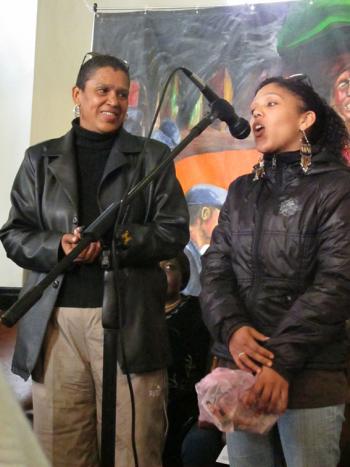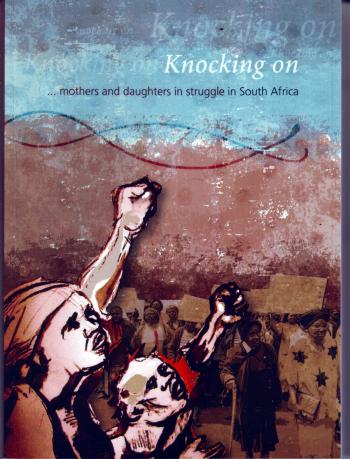Posted on August 10, 2010

A number of criteria were set for the selection of participants. They had to represent different regions. So, while the six mother and daughter pairs live in the Western Cape and Gauteng the genesis of their stories take readers to the rural Eastern Cape, Northern Province, Botswana, and even the United States of America. Contributors were selected because they reflected a spectrum of class and racial backgrounds (although to be honest our bias was towards grassroots, working class contributors). Participants were also selected to reflect diversity in terms of the sectors of struggle that the women were engaged. In terms of age-range, it was agreed that daughters should over 18 years of age or older, born in or before the 1980s. Finally, a decision was taken to interview women whose stories had never been published.
In the preface to the book, Debra Schultz, a gender specialist who worked for an international NGO based in New York, explains how the stories fill a gap in our understanding of South African women's experience in the anti-apartheid struggle. She explains how they also belong to a much larger narrative - global women's history - because the social space women operate in render them less visible than men.
The introduction, written by the editors Shirley Gunn and Sinazo Krwala, outlines the project process in some detail and describes the turning point which was reached when the twelve contributors first came together at a national workshop. 'Something profound happened' they explain, 'individual narratives and narrators were no longer detached and alone. Mothers connected with each other, daughters bonded with daughters. A new 'familyship' had grown out of the process.
The six mothers, Shahida Issel, Jessica Sherman, Sindiswa Nunu, Mmule Mosupye-Mpakanyane, Aloma Matthews and Judy Ann Seidman gave birth to their daughters during the struggle against apartheid. The six women juggled their roles as mothers, wives, breadwinners and activists. Invariably something had to give; one of their roles had to take second, third or fourth place. Interestingly, no marriages survived, except one perhaps; and those who sacrificed time with their children expressed feeling of deep regret and guilt.
Their daughters, Leila Issel-Davids, Zandi Sherman, Noluphiwo Kama, Bontle Mpakanyane, Irma Titus and Annie Neo Parsons have confidence, strong identities and have taken on the values, which guided their mothers through the struggle years.

The afterword by Fiona Ross, social anthropologist at UCT, asserts that Knocking on ... mothers and daughters in struggle in South Africa reminds us that the struggle is gendered and that women's stakes in it are different to men's. The stories, she says, point to what women's activism has accomplished and beg the question of what remains undone.
This is, after all, a narrative history project, not a boring piece of research with a neat set of findings. Debra Schultz puts it differently, 'The stories are messy and magnificent.' They speak and reach readers in different and profound ways. I therefore urge you to draw your own conclusions having read it yourselves.
For more information see the Human Rights Media Centre Website, and buy the book!
Read the Archival Platform report on the HRMC's 10th Anniversary celebration
Shirley Gunn is the Director of the Human Rights Media Centre